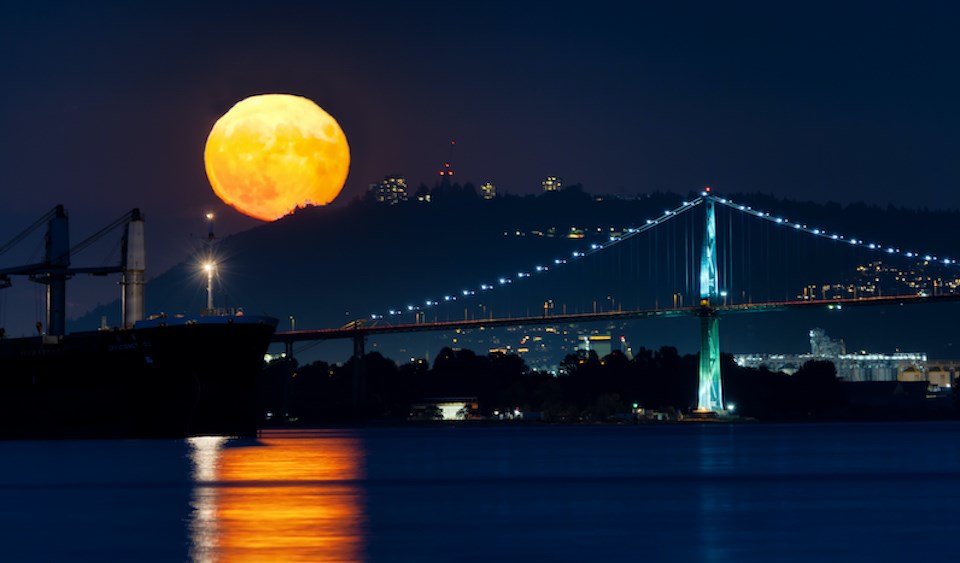You may have heard about the man in the moon — but the worm might be something you're a little less familiar with.
Named after the earth-borrowing, eye-less creature, the full "worm" moon is named after the time of year when earthworms start to surface from the soil at the start of spring.
The March moon will reach its at midnight in Vancouver, according to timeanddate.com.
But new research finds that the name actually refers to the time when Captain Jonathan Carver visited the Naudowessie (Dakota) and other Native American tribes and saw a different type of “worm” — beetle larvae — emerging "from the thawing bark of trees and other winter hideouts at this time," according to the Old Farmer's Almanac.
The March full moon is also known as the Eagle Moon or Goose Moon (from the Algonquin and Cree), or the Crow Comes Back Moon (from the Northern Ojibwe), as well as the Sugar Moon (Ojibwe), Wind Strong Moon (Pueblo), and Sore Eyes Moon (Dakota, Lakota and Assiniboine), according to the almanac.
March full moon is also considered the "paschal moon"
Since the March full occurs after the spring equinox on March 21 it is also considered the full "paschal moon" by Christian observers. This means that it will determine when Easter is observed, which will be on March 24.
"The dates of the full Moon and the March equinox that are are not the astronomical dates of these events, but rather the ecclesiastical dates," notes the Old Farmer's Almanac.
The term "paschal" is derived from the word "pascha," which is Greek or Latin for Passover.
Metro Vancouverites will also be able to view four "supermoons" this year, meaning the moon will appear somewhat larger and brighter than it does during typical full moons.
The spring Metro Â鶹´«Ă˝Ół»weather forecast also includes warmer-than-average temperatures, which could allow for mild outdoor viewing conditions.
Stay up-to-date with hyperlocal forecasts across 50 neighbourhoods in the Lower Mainland with Weatherhood.



